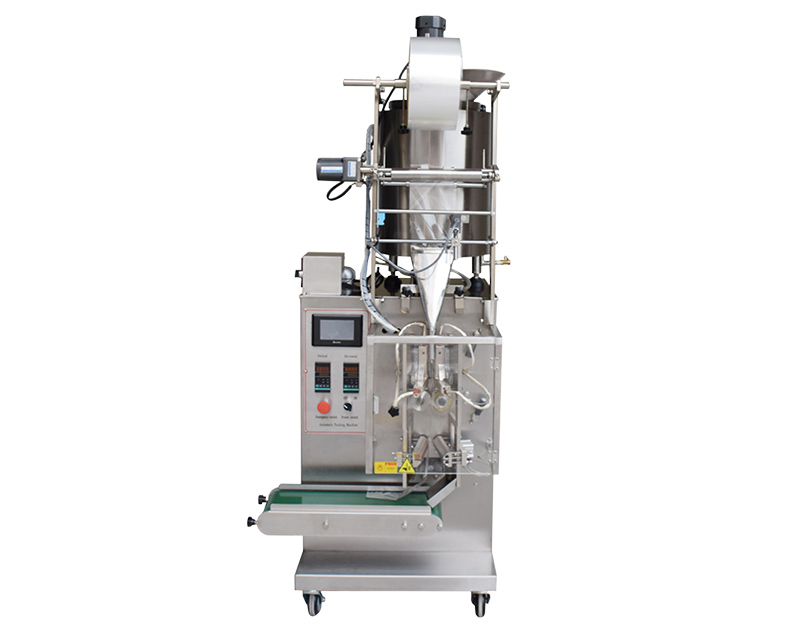How Does a Liquid Packaging Machine Work?
A Comprehensive Guide to Understanding the Inner Workings of Liquid Packaging Machines
Liquid packaging machines are highly efficient and sophisticated devices used in various industries to package liquids such as water, beverages, oils, and more. These machines automate the packaging process, ensuring accuracy, speed, and consistency. In this article, we will explore the intricate workings of liquid packaging machines, providing you with a comprehensive understanding of how they operate.
The Process of Liquid Packaging
A liquid packaging machine follows a systematic process to package liquids into containers. Here is a step-by-step breakdown of how these machines work:
Container Feeding: The first step involves feeding the containers into the machine. This can be done manually or through an automated system. The containers are carefully placed onto a conveyor belt or other feeding mechanism, which transports them to the subsequent stages of the packaging process.
Liquid Filling: Once the containers are in position, the liquid filling process begins. The machine is equipped with a precise liquid filling system that measures and dispenses the desired quantity of liquid into each container. This system ensures accurate fill levels and minimizes wastage.
Container Sealing: After the containers are filled with the liquid, the next step is to seal them. Depending on the type of packaging required, different sealing methods are employed. Common sealing techniques include heat sealing, induction sealing, and capping. These methods ensure a secure and leak-proof seal, preserving the quality and integrity of the liquid product.

Labeling and Coding: Once the containers are sealed, they move on to the labeling and coding stage. In this stage, labels containing important product information, such as branding, ingredients, and expiration dates, are applied to the containers. Additionally, coding systems imprint batch numbers or production dates on the packaging for traceability and quality control purposes.
Packaging Inspection: To ensure the highest quality standards, liquid packaging machines incorporate inspection systems. These systems use sensors and cameras to detect any defects or abnormalities in the packaging process. They can identify issues such as incomplete seals, incorrect fill levels, or damaged containers. Any faulty containers are removed from the production line, ensuring only properly packaged products move forward.
Packaging Discharge: Finally, the fully packaged containers are discharged from the machine and prepared for storage, distribution, or further processing. The containers are carefully handled to prevent any damage or spills. The packaging machine operates at high speeds, allowing for efficient and continuous production.
Key Components of a Liquid Packaging Machine
To achieve optimal performance, liquid packaging machines consist of several key components. These components work together seamlessly to ensure a smooth packaging process. Here are the primary elements of a typical liquid packaging machine:
Conveyor System: The conveyor system transports the containers through the various stages of the packaging process. It ensures a consistent flow and proper synchronization of containers, maximizing efficiency.
Liquid Filling System: The liquid filling system is responsible for accurately measuring and dispensing the desired amount of liquid into each container. It typically consists of precision pumps, valves, or flow meters that control the liquid flow.
Sealing Mechanism: The sealing mechanism is designed to create a tight and secure seal on the containers. It can employ different methods such as heat sealing, induction sealing, or capping, depending on the packaging requirements and the type of container being used.
Labeling and Coding System: The labeling and coding system applies labels to the containers, providing crucial information about the product. It may include label applicators, printers, and coding machines that ensure accurate and legible labeling.
Inspection Systems: Inspection systems use advanced sensors and cameras to inspect the packaging process for any defects or inconsistencies. They help identify issues such as misaligned labels, improper seals, or damaged containers, ensuring that only high-quality products reach the market.
Control Panel: The control panel serves as the command center of the liquid packaging machine. It allows operators to monitor and adjust various parameters such as fill levels, sealing temperatures, labeling positions, and more. The control panel also displays real-time data and alerts for easy troubleshooting.
Conclusion
Liquid packaging machines are essential for efficient and precise packaging of various liquid products. By automating the packaging process, these machines ensure accuracy, speed, and consistency, while also minimizing wastage. Understanding how liquid packaging machines work and their key components can help businesses make informed decisions when it comes to selecting the right machine for their specific packaging needs. With the ability to handle high volumes of liquid products and maintain stringent quality control, liquid packaging machines play a crucial role in various industries, contributing to improved productivity and customer satisfaction.
166
0
0


Comments
All Comments (0)